Overview
Managing Type 2 diabetes can feel overwhelming, but you’re not alone in this journey. This article highlights some of the best foods that can support your health and help you navigate your dietary choices with confidence. By incorporating nutrient-rich options like:
- Fatty fish
- Leafy greens
- Avocados
- Beans
- Greek yogurt
- Nuts
- Berries
- Whole grains
- Sweet potatoes
into your meals, you can take meaningful steps toward regulating your blood sugar levels and enhancing your overall well-being.
Research supports the benefits of these foods, showing how they can contribute to better health outcomes. It’s understandable to feel uncertain about what to eat, but rest assured, these options are not just good for your body; they can also be delicious and satisfying. As you explore these foods, remember that every small change can make a significant difference.
We encourage you to share your experiences and thoughts as you embark on this path. Together, we can create a supportive community where everyone feels heard and understood. You're not alone in this journey, and we are here to support you every step of the way. Let’s take this journey toward better health together.
Introduction
In a world where dietary choices can significantly impact health, managing Type 2 diabetes through nutrition has become a focal point for many individuals. It's understandable to feel overwhelmed by the multitude of options available. This article delves into ten nourishing foods that not only support blood sugar control but also promote overall wellness.
You'll discover how specific foods like:
- Fatty fish
- Leafy greens
- Whole grains
can play a pivotal role in your dietary strategies. Remember, you're not alone in this journey. With guidance and support, you can navigate your choices effectively. So, how can you determine which foods truly make a difference in managing diabetes? Let's explore this together.
T2DSolutions: Comprehensive Resource for Type 2 Diabetes Management
At T2DSolutions, we are dedicated to empowering individuals and families with the essential knowledge and resources needed to manage Type 2 Diabetes effectively. Our platform offers a wealth of comprehensive educational resources designed to help you understand blood sugar management, including personalized dietary plans, exercise routines, and insights into the latest medical research breakthroughs. This focus on education is crucial; research shows that self-management education for chronic illnesses significantly improves patient outcomes, leading to reductions in HbA1c levels and healthcare costs. For example, successful case studies reveal that structured programs can result in substantial health improvements and cost savings, highlighting the importance of informed management strategies.
As we look ahead to 2025, innovative educational initiatives for blood sugar management are emerging, focusing on accessibility through app-based programs and community engagement. These initiatives strive to overcome the barriers many face in accessing quality education, especially within underserved populations. Healthcare professionals emphasize the importance of education in managing blood sugar levels as a standard of care, recognizing its vital role in preventing complications and enhancing quality of life. By simplifying the complexities of diabetes management, T2DSolutions ensures that you have the necessary tools and guidance for effective care, creating a supportive environment as you navigate your diabetes journey.
You're not alone in this journey. We are here to support you every step of the way, providing you with the resources and community you need to thrive.
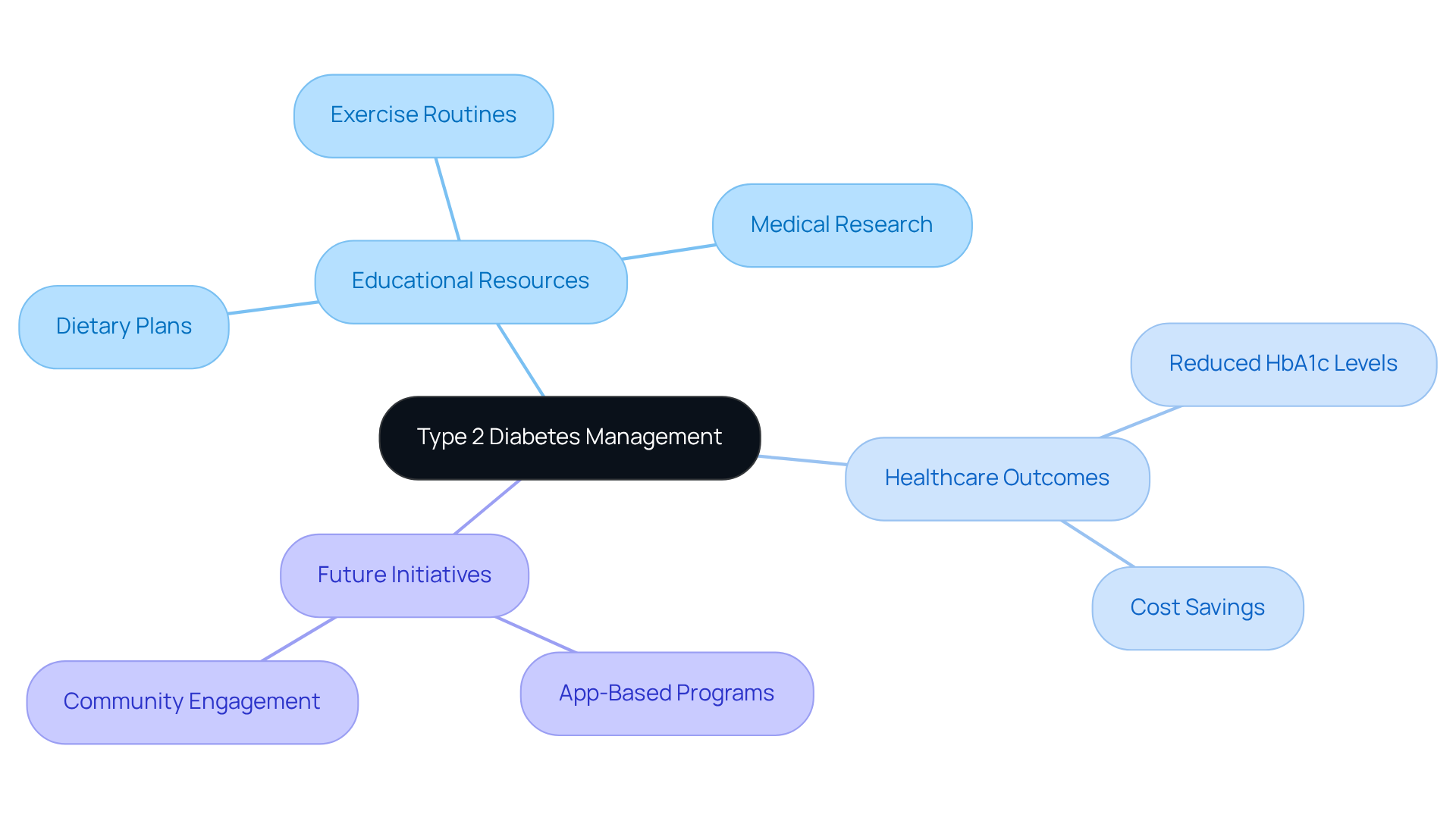
Fatty Fish: Omega-3 Rich Choices for Heart Health
Fatty fish, such as salmon, mackerel, and sardines, are rich in omega-3 fatty acids, which are essential for promoting heart health. These beneficial fats are among the best foods for type 2 diabetes diet as they can lower triglyceride levels by an average of 0.24 mmol/L and reduce inflammation. It's heartening to know that recent studies have shown that incorporating the best foods for type 2 diabetes diet, such as fatty fish, can significantly enhance insulin sensitivity, leading to better blood sugar control.
The National Academy of Medicine recommends that individuals with elevated blood sugar levels eat fatty fish at least twice a week, in line with general dietary guidelines. To truly reap these health benefits, aim for a minimum of two portions of oily fish weekly, incorporating them into a balanced diet that includes the best foods for type 2 diabetes diet to support overall blood sugar management.
If you're feeling overwhelmed, remember that you're not alone in this journey. As you explore your dietary options, consider looking into T2DSolutions as a valuable resource hub for education on managing diabetes. We are here to support you every step of the way.
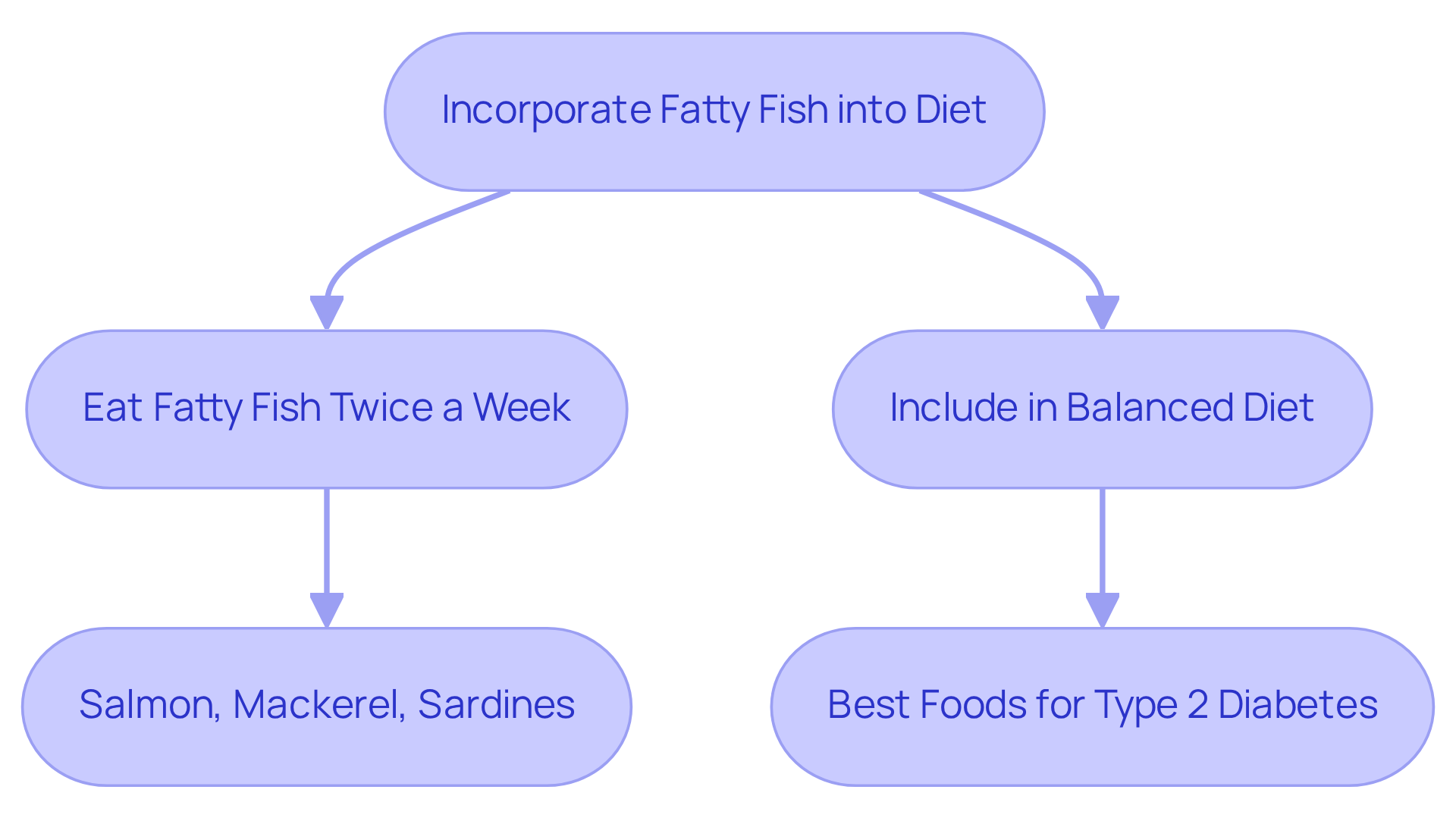
Leafy Greens: Nutrient-Dense Options for Blood Sugar Control
Leafy greens, including spinach, kale, and collard greens, are truly nutritional powerhouses. They are rich in vitamins, minerals, and antioxidants, all while being low in calories and carbohydrates. The high fiber content of these items makes them some of the best foods for type 2 diabetes diet, as they play a crucial role in regulating glucose levels and enhancing insulin sensitivity. It's encouraging to know that studies show diets high in fiber can significantly improve outcomes in managing blood sugar levels. For instance, a meta-analysis indicated that greater consumption of green leafy vegetables was linked to a marginally significant reduced risk of Type 2 Diabetes (T2D). This highlights their potential advantages in glucose regulation.
Including a variety of leafy vegetables in your meals not only boosts overall nutrition but also supports effective blood sugar management. The American Diabetes Association suggests filling half your plate with non-starchy vegetables at each meal to maximize health benefits. This approach not only aids in glucose regulation but also incorporates the best foods for type 2 diabetes diet, which is essential for managing Type 2 Diabetes. As dietitian Kim Rose-Francis wisely points out, "The fiber in leafy greens is advantageous for blood sugar regulation, making them a great option for anyone overseeing their condition." By prioritizing these nutrient-rich choices, you're taking significant steps toward better health and improved outcomes for blood sugar management. Remember, you're not alone in this journey; we are here to support you every step of the way.
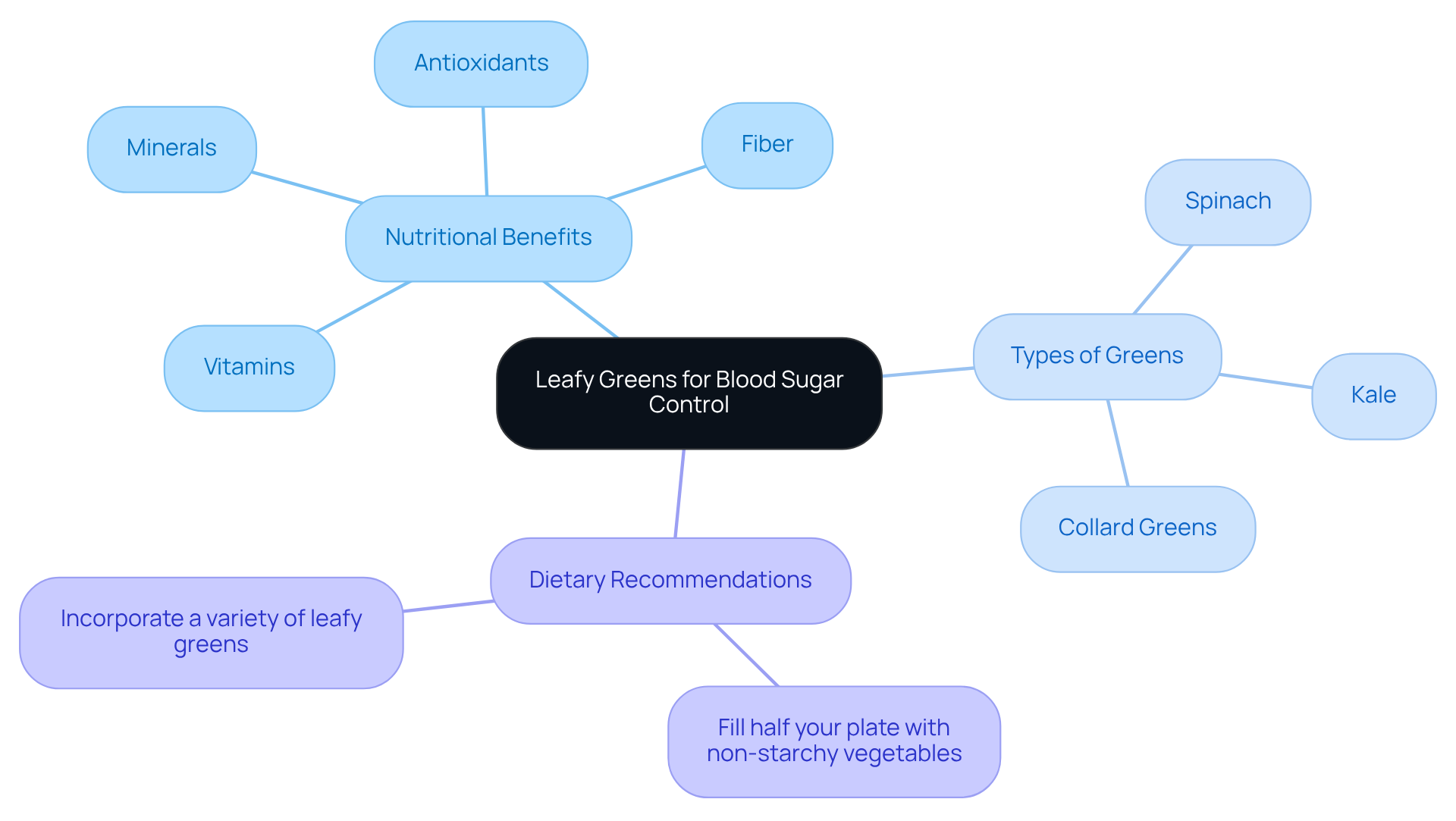
Avocados: Healthy Fats for Balanced Blood Sugar
Avocados are truly a powerhouse of beneficial monounsaturated fats. They are recognized for their remarkable ability to reduce bad cholesterol and improve heart health, which is something we all care about deeply. With a negligible glycemic index and zero grams of naturally occurring sugar per serving, avocados do not cause spikes in blood sugar levels. This makes them among the best foods for type 2 diabetes diet, especially if you’re navigating this journey.
Moreover, avocados are rich in fiber, aiding digestion and promoting a feeling of fullness. Recent studies suggest that regular avocado intake is associated with a 28% reduced risk of developing type 2 conditions, particularly among Latine communities. For instance, a 2024 study assessed data from nearly 15,000 Latine adults regarding avocado consumption and blood sugar management, emphasizing its numerous advantages.
Incorporating avocados into your meals can help maintain stable glucose levels and are considered among the best foods for type 2 diabetes diet to promote overall wellness. Consider adding sliced avocado to your salads, blending it into smoothies, or using it as a spread on whole-grain toast for a nutritious boost. You can also enjoy avocados in tacos or rice bowls, making them a versatile addition to your meals.
If you’re looking for additional resources on managing your condition through diet, T2DSolutions provides valuable information and community support. Remember, you’re not alone in this journey; we are here to support you every step of the way.
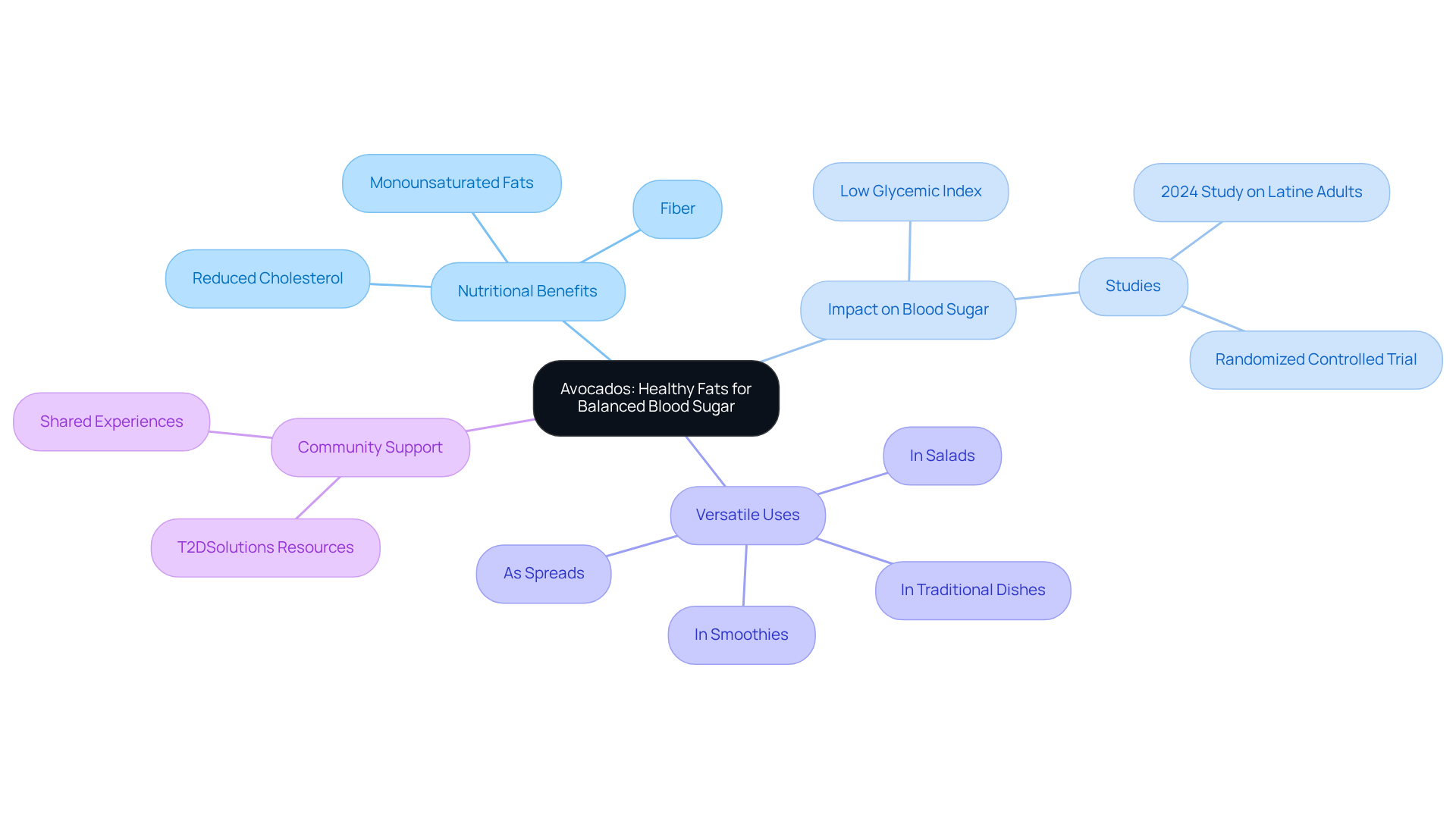
Beans: Fiber and Protein Powerhouses for Diabetes
Beans, including black beans, kidney beans, and lentils, are considered some of the best foods for type 2 diabetes diet because of their remarkable fiber and protein content. Beans are considered among the best foods for type 2 diabetes diet due to their high fiber content, which helps slow the absorption of glucose and promotes steadier glucose levels. It's understandable to feel overwhelmed, but studies show that diets rich in fiber can significantly aid in regulating glucose levels, making beans a wise choice for those navigating insulin-related challenges. Furthermore, beans are one of the best foods for type 2 diabetes diet because they have a low glycemic index, which means they lead to gradual increases in glucose and insulin levels, further supporting effective management of diabetes.
The American Diabetes Association recommends incorporating the best foods for type 2 diabetes diet, including dried beans or no-sodium canned beans, into several meals each week to harness these benefits. By adding beans to your meals—whether in soups, salads, or as a nutritious side dish—you can enhance your overall dietary quality while reaping essential nutrients. Regularly enjoying beans not only helps with better blood sugar regulation but also promotes heart health by potentially lowering LDL cholesterol levels. You're not alone in this journey; making beans a versatile and beneficial addition to your meal plan can be empowering.
To ease any potential digestive issues, such as gas, consider gradually increasing your bean intake and using proper cooking methods. Following the USDA MyPlate guidelines, which suggest consuming about 3 cups of legumes per week, can further emphasize that beans are among the best foods for type 2 diabetes diet. Remember, we are here to support you every step of the way as you make these positive changes.
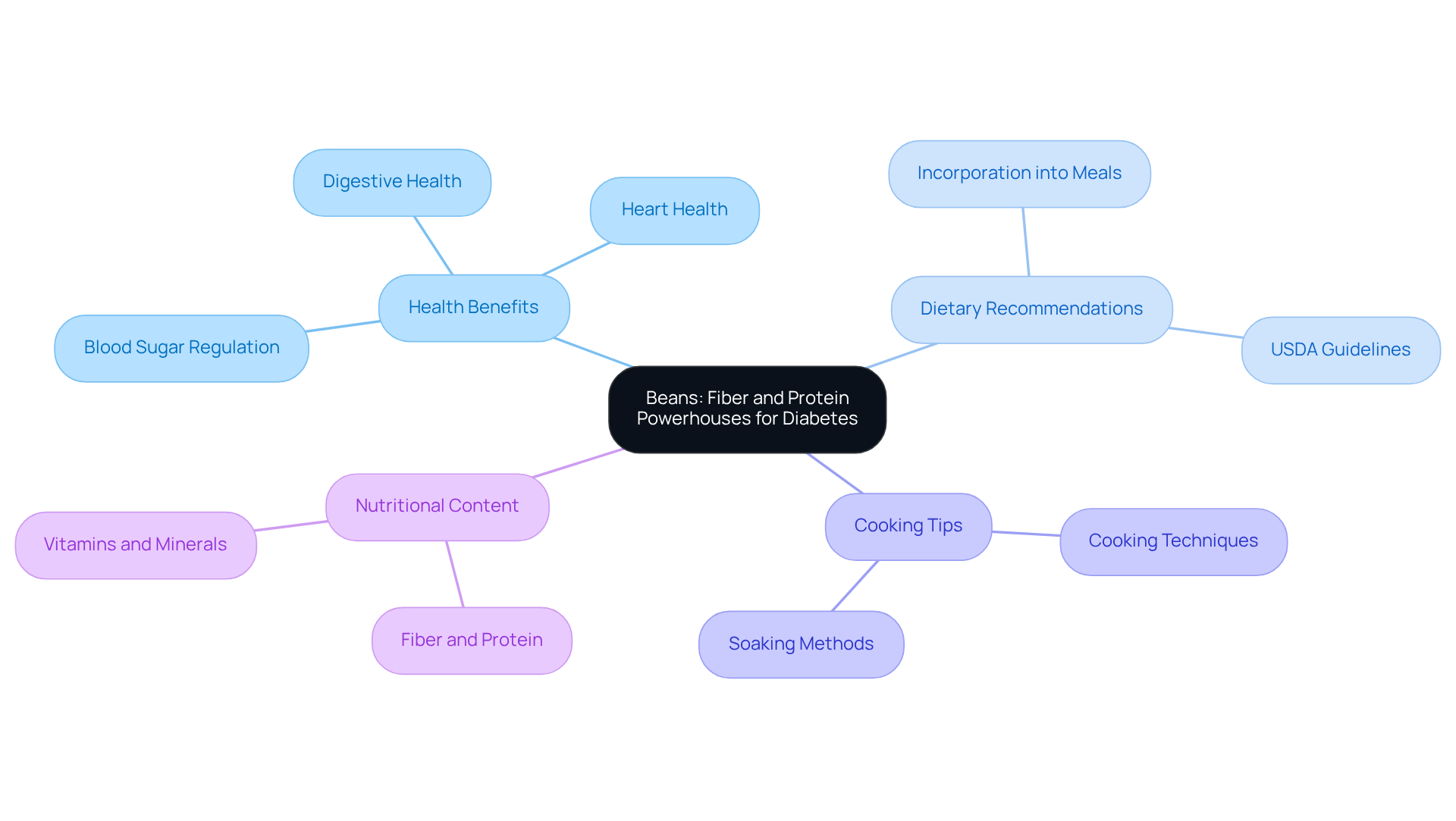
Greek Yogurt: Protein-Packed Probiotic for Digestive Health
Greek yogurt stands out as a nurturing source of protein and probiotics, both essential for effectively managing blood sugar levels. Its higher protein content compared to regular yogurt can help control appetite and support weight management, which are important factors in the best foods for type 2 diabetes diet. Additionally, Greek yogurt is among the best foods for type 2 diabetes diet, as it tends to be lower in sweeteners and carbohydrates, making it a comforting option for anyone monitoring their intake.
It's understandable to feel overwhelmed by dietary choices, but studies suggest that the probiotics in Greek yogurt may improve insulin sensitivity, potentially leading to lower glucose levels. Plus, Greek yogurt is rich in calcium, which is beneficial for your bone health.
To maximize these benefits, consider choosing plain, unsweetened Greek yogurt to avoid extra sweeteners. For a nutritious boost, think about mixing in fresh berries or nuts. Not only do they enhance the flavor, but they also add essential vitamins and healthy fats. Remember, you’re not alone in this journey, and we are here to support you every step of the way.

Nuts: Satisfying Snacks for Blood Sugar Management
Nuts, such as almonds, walnuts, and pistachios, are not just tasty snacks; they are nutrient-dense options packed with healthy fats, protein, and fiber. This makes them especially beneficial as they are among the best foods for type 2 diabetes diet for individuals navigating Type 2 Diabetes. Their low glycemic index means they have minimal impact on blood sugar levels, helping to prevent those significant spikes that can be concerning. Research shows that regularly enjoying nuts can aid in weight management, as they promote feelings of fullness and reduce overall hunger. For example, a systematic review found that consuming a handful (~30g) of nuts daily is associated with a 21% reduced risk for cardiovascular disease (CVD). Moreover, the PREDIMED trial revealed that eating more than three portions of nuts each week led to a 22% lower occurrence of diabetes-related conditions.
Incorporating nuts into your diet can be both simple and enjoyable. You might aim for a small handful as a snack or enhance your salads and yogurt with a sprinkle of nuts for that extra crunch and nutrition. Nutritionists often emphasize that incorporating the best foods for type 2 diabetes diet, like nuts instead of high-glycemic index carbohydrates, can improve glycemic control and lipid profiles. As Cyril WC Kendall noted, "Increased mixed nut consumption as a source of unsaturated (monounsaturated and polyunsaturated) fat intake to replace dietary starch favorably affected both HbA and serum lipids." By integrating nuts into your daily routine, you can enjoy a satisfying snack that supports your health goals. Remember, you’re not alone in this journey; T2DSolutions is here to provide valuable resources to help you manage Type 2 Diabetes effectively.
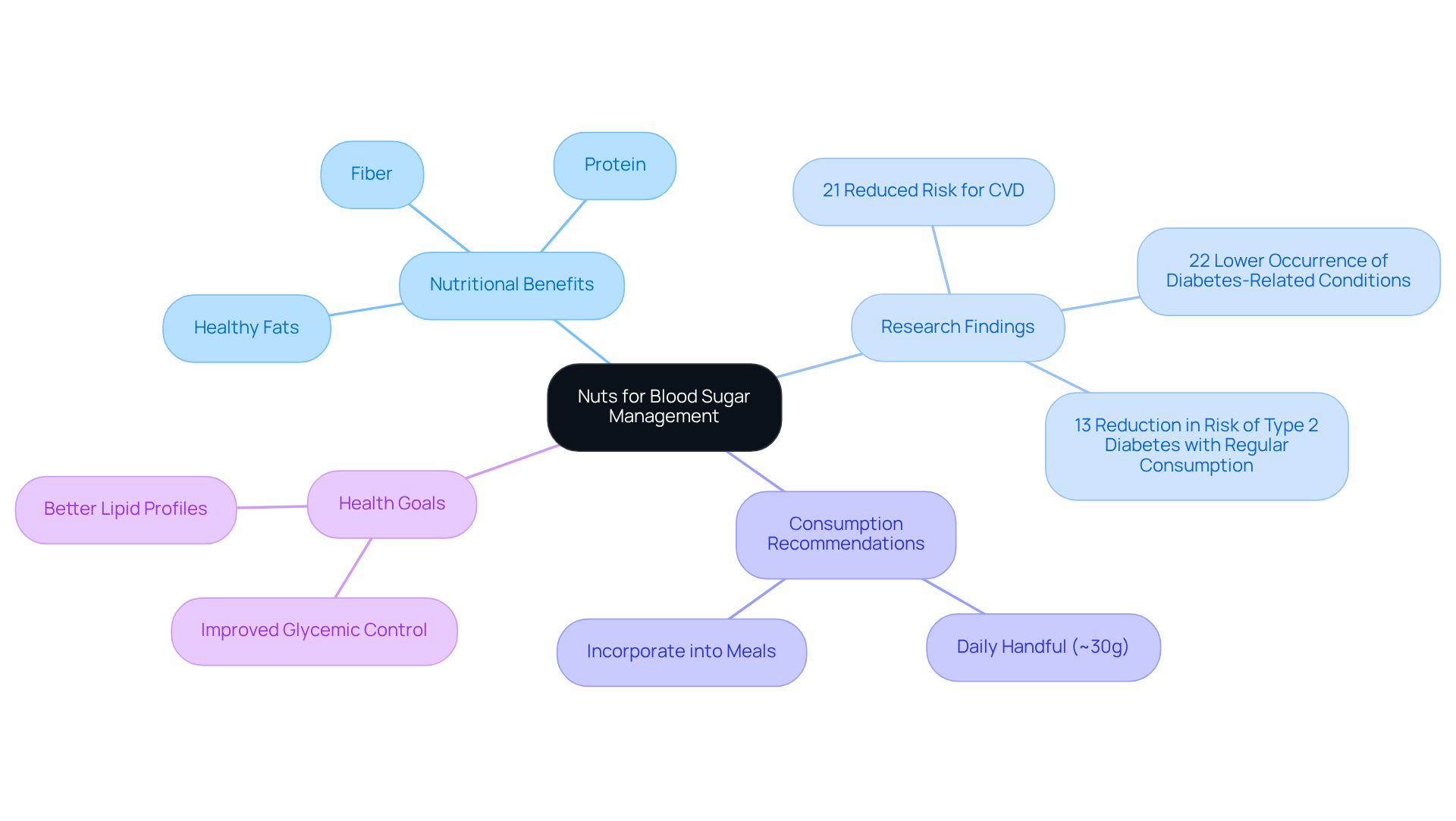
Berries: Antioxidant-Rich Fruits for Healthier Snacking
Berries—such as strawberries, blueberries, and raspberries—are not only delicious but also packed with antioxidants, vitamins, and fiber. With a low glycemic index of 53, they are considered one of the best foods for type 2 diabetes diet, making them a safe fruit option for those managing high blood sugar. Berries are among the best foods for type 2 diabetes diet because the fiber they contain helps regulate blood sugar levels and promotes digestive health. You might find it comforting to know that studies suggest that blueberries are among the best foods for type 2 diabetes diet, as they can enhance insulin sensitivity and aid in weight control. Aidar R Gosmanov emphasizes the connection between anthocyanins and a lowered risk of type 2 conditions.
Consider enjoying berries as a snack, in smoothies, or as a topping for yogurt or oatmeal to give your meals a nutritious boost. Furthermore, blueberries score high on the Aggregate Nutrient Density Index (ANDI) with a rating of 132, highlighting their importance in managing blood sugar. As Kathy W. Warwick points out, receiving a type 2 condition diagnosis can feel overwhelming. However, incorporating antioxidant-rich berries, which are among the best foods for type 2 diabetes diet, can enhance your overall health and improve glucose regulation. Remember, you’re not alone in this journey; including these delicious fruits can be a step toward better health.
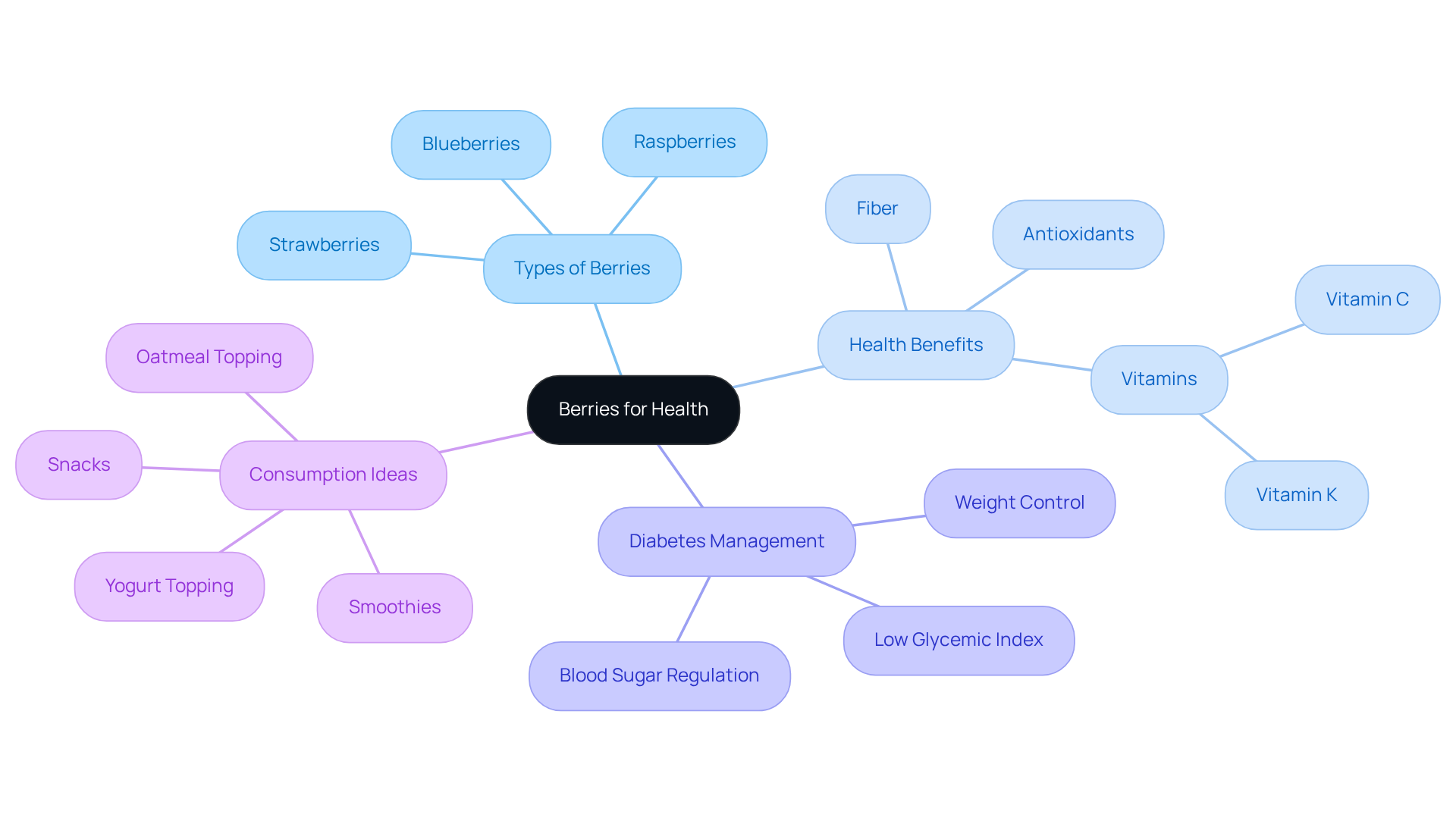
Whole Grains: Fiber-Rich Choices for Sustained Energy
Whole grains, including quinoa, brown rice, and whole wheat bread, are considered some of the best foods for type 2 diabetes diet because they are not only nutritious but also vital allies in managing the condition. These foods are considered some of the best foods for type 2 diabetes diet because they are rich in fiber and essential nutrients, helping to maintain stable glucose levels, which is crucial for effective management of your condition. It’s understandable to feel overwhelmed, but research shows that incorporating more whole grains can make a significant difference. In fact, increasing your intake by just two servings a day can lead to a 21% reduction in diabetes risk.
The fiber found in whole grains does more than support digestion; it promotes a feeling of fullness, which can be instrumental in preventing overeating. You're not alone in this journey, and making small changes can lead to meaningful improvements in your health. To embrace whole grains, consider choosing them as some of the best foods for type 2 diabetes diet, including:
- Whole grain bread
- Pasta
- Cereals
Each choice contributes to a fiber-rich diet that supports stable glucose levels and enhances your overall well-being.
Remember, we are here to support you every step of the way. By taking these steps, you are not only nurturing your body but also empowering yourself on this path toward better health.
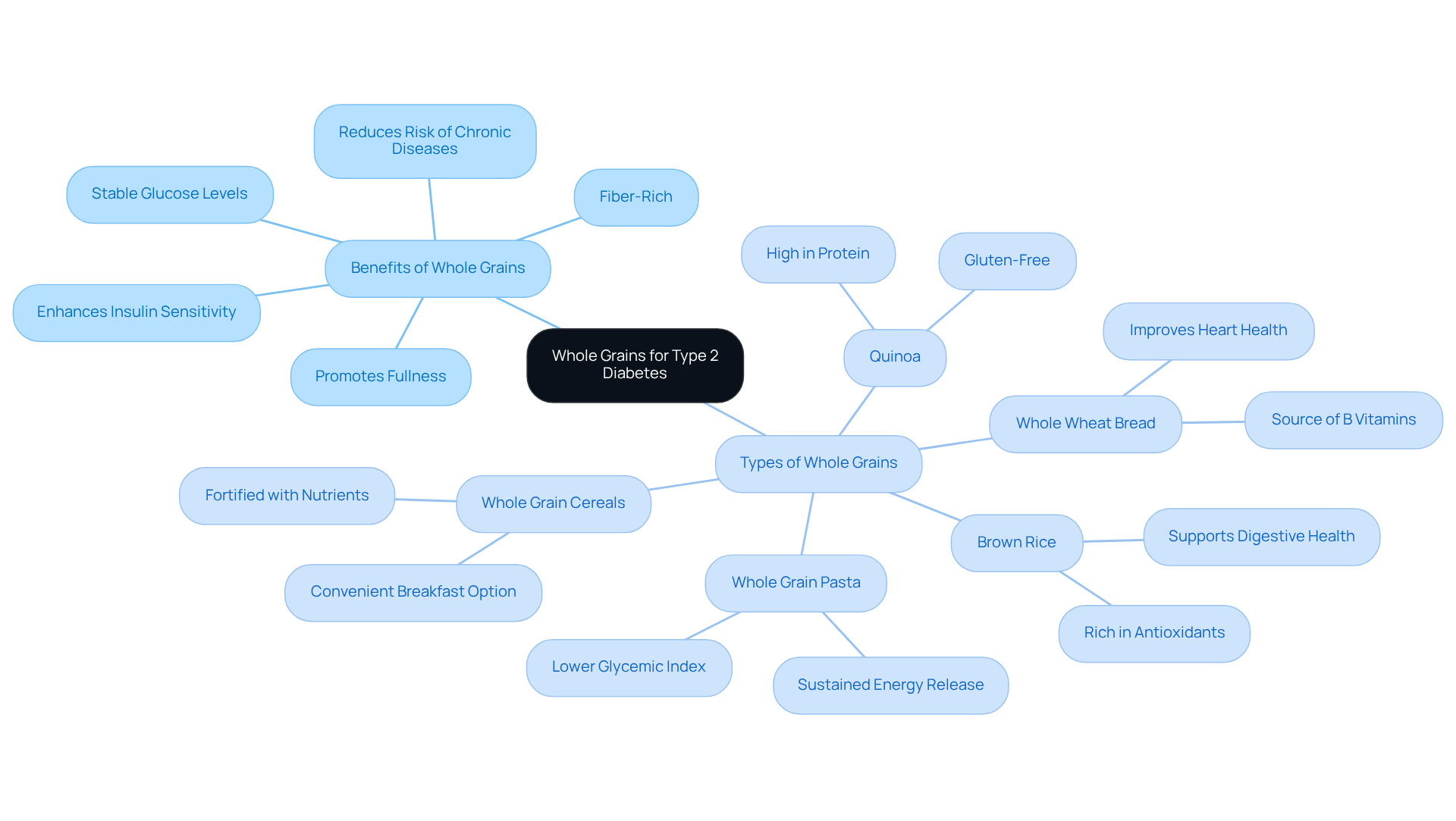
Sweet Potatoes: Nutrient-Rich Carbohydrates for Diabetics
Sweet potatoes are a wonderful source of nutrients, brimming with fiber, vitamins, and minerals. Their lower glycemic index compared to standard potatoes makes them a great choice for those managing glucose levels, as they are less likely to cause spikes. As dietitian Adda Bjarnadottir highlights, sweet potatoes are rich in beta carotene, which the body can convert into vitamin A—crucial for eye health and immune function. Moreover, research suggests that the antioxidants in sweet potatoes may help reduce inflammation and lower the risk of chronic diseases.
Incorporating sweet potatoes into your meals can be both enjoyable and beneficial. Whether baked, mashed, or made into fries, they are considered some of the best foods for type 2 diabetes diet as a diabetes-friendly side dish. Interestingly, boiling sweet potatoes can further lower their glycemic index, making them even more suitable for glucose management. A medium-sized sweet potato contains about 103 calories and 3.8 grams of fiber, which aids digestion and helps regulate sugar absorption.
Additionally, the Caiapo variety of sweet potato is considered one of the best foods for type 2 diabetes diet, as it has shown promise in alleviating symptoms by lowering fasting blood glucose and enhancing insulin sensitivity. This underlines the potential of sweet potatoes as one of the best foods for type 2 diabetes diet in a blood sugar management plan. However, it’s essential to remember that sweet potatoes are high in oxalates, which may increase the risk of kidney stones for some. Thus, moderation is key.
Overall, sweet potatoes are considered one of the best foods for type 2 diabetes diet, as they not only add flavor to your meals but also play a significant role in a balanced diet for those managing diabetes. You're not alone in this journey, and we are here to support you every step of the way.
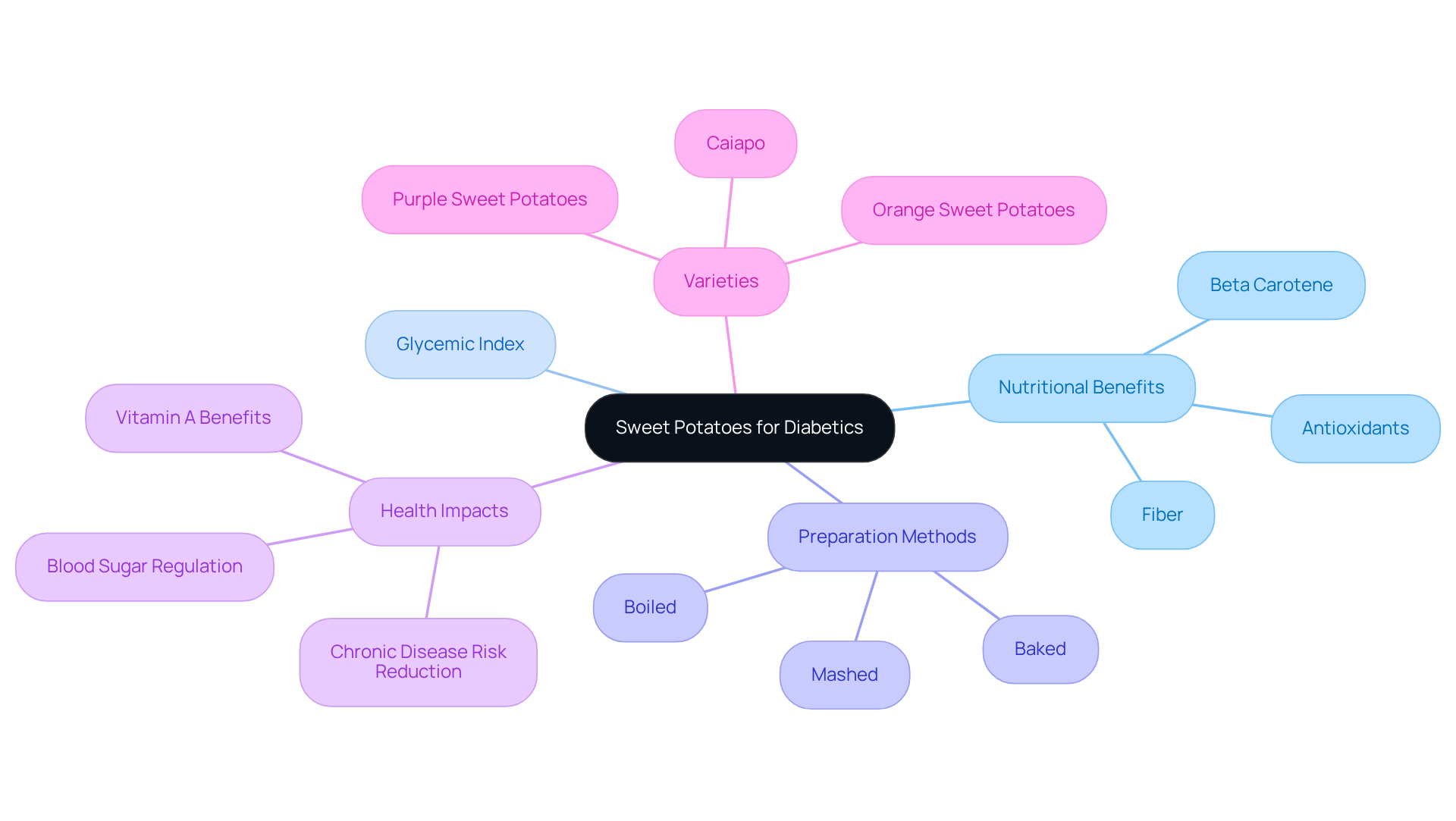
Conclusion
Incorporating the best foods for a Type 2 diabetes diet can significantly enhance blood sugar management and overall health. It's heartening to see a variety of nutrient-dense options highlighted, including:
- Fatty fish
- Leafy greens
- Avocados
- Beans
- Greek yogurt
- Nuts
- Berries
- Whole grains
- Sweet potatoes
Each of these foods not only supports blood sugar regulation but also contributes to heart health, weight management, and improved insulin sensitivity.
Key insights from the article emphasize the importance of:
- Fiber-rich foods
- Healthy fats
- Low glycemic index options
in creating a balanced diet for those managing diabetes. Regularly including these foods can lead to better glucose control, reduced risk of complications, and an overall improvement in quality of life. The resources provided by T2DSolutions further empower individuals to make informed dietary choices, reinforcing the notion that education and community support are vital in the journey of diabetes management.
Ultimately, embracing these dietary changes is a powerful step toward better health. By making small yet impactful adjustments to daily meals, individuals can take control of their diabetes journey. Remember, you're not alone in this journey; support and resources are available to ensure success in achieving optimal health and well-being.
Frequently Asked Questions
What is T2DSolutions and what resources does it offer for Type 2 Diabetes management?
T2DSolutions is a platform dedicated to empowering individuals and families with knowledge and resources for managing Type 2 Diabetes. It offers educational resources on blood sugar management, personalized dietary plans, exercise routines, and insights into the latest medical research.
How does self-management education impact Type 2 Diabetes outcomes?
Research indicates that self-management education for chronic illnesses, including Type 2 Diabetes, significantly improves patient outcomes, leading to reductions in HbA1c levels and healthcare costs.
What innovative initiatives are emerging for blood sugar management by 2025?
Innovative educational initiatives are focusing on accessibility through app-based programs and community engagement, aimed at overcoming barriers to quality education, particularly in underserved populations.
Why is education important in managing blood sugar levels?
Education is crucial in managing blood sugar levels as it helps prevent complications and enhances quality of life, making it a standard of care emphasized by healthcare professionals.
What are the benefits of consuming fatty fish for individuals with Type 2 Diabetes?
Fatty fish, such as salmon, mackerel, and sardines, are rich in omega-3 fatty acids, which can lower triglyceride levels and reduce inflammation, enhancing insulin sensitivity and improving blood sugar control.
How often should individuals with elevated blood sugar levels consume fatty fish?
The National Academy of Medicine recommends that individuals with elevated blood sugar levels eat fatty fish at least twice a week, as part of a balanced diet.
What role do leafy greens play in blood sugar control?
Leafy greens like spinach, kale, and collard greens are low in calories and carbohydrates while being high in fiber, vitamins, and minerals, which help regulate glucose levels and enhance insulin sensitivity.
What dietary recommendations are suggested for including leafy greens in meals?
The American Diabetes Association suggests filling half your plate with non-starchy vegetables at each meal to maximize health benefits and support effective blood sugar management.
How can T2DSolutions support individuals in managing their diabetes journey?
T2DSolutions provides resources and community support to help individuals navigate their diabetes journey, ensuring they have the necessary tools and guidance for effective care.



